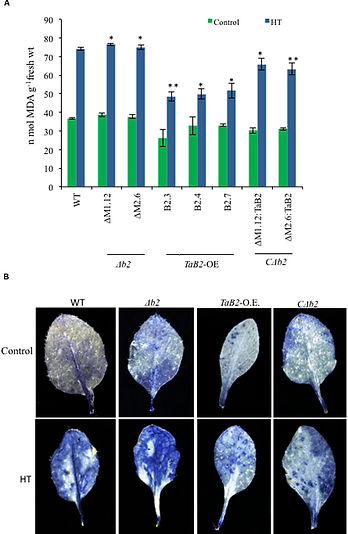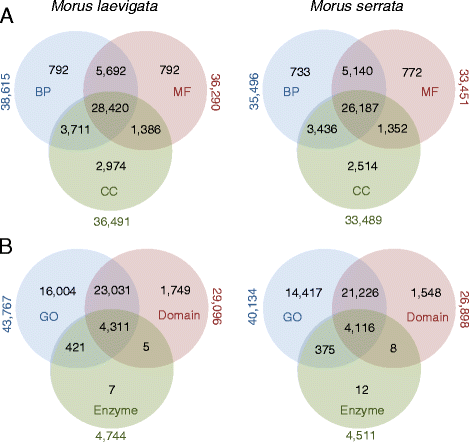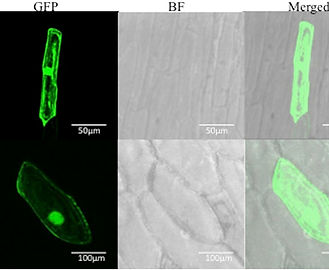
Recent developments in the field of plant genetic engineering when coupled with genomics make it a potential tool to alleviate and meet the challenges of the future. Use of modern techniques of plant tissue culture and genetic manipulation are essentially under-exploited in mulberry.Since plant productivity is strongly influenced by abiotic stress conditions like drought, high salt and low temperature, and plants respond with an array of biochemical and physiological adaptations, transgenic approaches are a powerful means of governing stress tolerance in plants of commercial importance. Some of the significant achievements in this respect are as follows:
Seribiotechnology
-
Reliable and efficient regeneration protocols of commercially important and elite genotypes of Morus have been developed from axillary buds, seedling explants, and field-grown mature explants. Thiadiazuron has been found to be beneficial for bud break and in vitro regeneration. Long-term regenerative cultures have also been established from mature leaf tissues. Particle bombardment and Agrobacterium-mediated genetic transformation of Mulberry established for the first time, Internationally.
-
Plant Biotechnology (Japan) 2001
-
Sericologia, 2001
-
J Sericulture, 2002
-
Ind. J Exp Biol, 2002
-
Plant Cell Reports, 2003
-
Ind j Sericulture, 2003
-
Plant Biotechnology (Japan), 2003
-
J Plant Biol., 2005
-
Physiol. Mol. Biol. Plants, 2006
-
Sericologia, 2009
-
Bangladesh J Sericulture, 2009 (invited article)
-
Adv. Pl Sciences, 2010
-
Sericologia, 2013
-
-
The barley HVA1 gene, encoding for a late embryogenesis abundant (LEA) protein, has been introduced into mulberry by Agrobacterium-mediated co-cultivation. Most of the transgenics tested displayed improved agronomic traits under simulated water stress conditions for drought and salinity tolerance. These transgenics have also been tested for their suitability for silkworm rearing, with encouraging results.
-
Transgenic Research, 2008
-
Transgenic research, 2010
-
Transgenic Research, 2011
-
-
Mulberry transgenics developed for tolerance against salinity and drought have the capability to reduce the dependence on water for growth and can also be raised in saline soils (Transgenic Research, 2008, 17: 651-663).
-
Second generation mulberry transgenics were raised with the osmotin gene under a drought-inducible promoter. These transgenics display abiotic stress tolerance and also tolerance against biotic fungal pathogens. (Transgenic Research, 2009).
-
Overexpression of beta-carotene hydroxylase1 (BCH1) in Morus indica cv. shows higher levels of carotenoids and improved oxidative stress tolerance as compared with the untransformed wild type under non-stressed and stressed conditions. The BCH1 transgenics are found to be more tolerant to High light, UV irradiation and High temperatures by maintaining better membrane integrity under induced oxidative stress (Das 2009).
-
Together, these transgenics have been transferred to the Central Sericulture Research & Training Institute at Mysore, the Central Nodal agency of the Central Silk Board in India, with the help of DBT, and also to the GKVK at University of Agricultural Sciences, at Bangalore, for further field level analysis.
-
The complete sequence of the chloroplast genome of Morus indica was generated in 2006, the first in our country and first in mulberry Internationally. This information was used to resolve that Rosales are sister to Fabales in the Rosid group.
-
Tree Genetics & Genomes, 2006
-
Molecular Phylogenetics and Evolution, 2006
-
Plant Systematics & Evolution, 2008
-
Mulberry transcriptomics has been undertaken to investigate the influence of abiotic stress and to isolate novel genes associated with water availability. The ESTs have been used to isolate SSR and SNP markers for development of genetic maps in Indian Mulberry. The genic and non-genic markers can also be extrapolated to other members of the Moraceae like Artocarpus, Fig and Ficus spp. The largest transcriptomic data on mulberry has been contributed by our lab for various tissues and various abiotic stresses.
-
Tree Genetics & Genomes, 2009
-
Tree Genetics & Genomes, 2011
-
Plant Cell Reports, 2011
-
Tree Genetics & Genomes, 2012
-
Plant Cell Reports, 2013
-
Comparative transcriptomic studies undertaken from the leaf and root tissues of mulberry exposed to a variety of abiotic stress conditions revealed overlapping and specific patterns of transcript expression. These resources have provided a short list of potential candidate drought-responsive genes, expressed in leaves, which are involved in both initial and subsequent stages of stress and elucidate the transient regulatory proteins that regulate adaption to drought in this important plant Tree Genetics & Genomes, 2012).
-
Molecular markers are universally accepted as highly polymorphic, multiallelic, universally reproducible, dispersed throughout the genome, and independent of tissue and environmental influence. Transcriptomic and RNA-seq data has been used for identifying SSR and SNP markers in mulberry for use in various improvement programs (Tree Genetics & Genomes, 2012; Mathithumilan et al, 2013; Saeed et al, 2016a)
-
The expression patterns of MiSMT (Morus indica, Sterol Methyl Transferase) and MiVR (Morus indica, Vestitone reductase) was investigated in ten genotypes of mulberry under control and salt stress conditions by northern blot analysis. Significant genotypic differences were observed for both of these genes in different genotypes (Tetorya 2010).
-
Functional genomics via identification of expressed transcripts generated have the unrealized potential, and candidate genes relevant to the interest of the sericulture industry may represent important molecular tools to mulberry research groups. Some novel genes that have been functionally characterized from mulberry ESTs are the Remorins, a very large, plant-specific, multigene family (Checker & Khurana, 2013). To understand the drought responses in mulberry, other genes selected for functional validation are the ERDs (early responsive genes) namely, ERD4 and ERD15. ERD4 is a membrane protein that has recently been identified as a stress-induced cation channel, and ERD15 a novel drought-induced transcription factor.
-
Mulberry is also known for its medicinal properties. It is a rich source of lectins that are now being shown to have wider role in plant biology. Therefore to understand lectin genes in mulberry, putative members of the lectin gene superfamily were identified in the recently sequenced Morus notabilis genome and the two transcriptomes of wild species. Some lectin genes, like the Mannose-binding lectin, a Galactose binding lectin and a Curculin-like lectin. The lectin gene superfamily has been studied and analyzed in detail (Saeed et al, 2016b). These studies help in understanding of cell surface carbohydrate ligand–lectin recognition and also highlights the utility of lectins in biotechnological and clinical studies.
-
Other gene families analyzed are the NAC and WRKY transcription factors (Baranwal & Khurana, 2016; Baranwal et al, 2016). NAC and WRKY transcription factors form a plant-specific gene family which have been shown to function in regulating development aspects in addition to their role in stress responses, including biotic and abiotic stresses.
-
Since leaf moisture is significant for mulberry, Membrane Intrinsic Proteins (MIPs) or Aquaporins, involved in controlling transport of water and certain other molecules, have been investigated. Role of MIPs genes have also been established in plant development and stress responsiveness. Similarly, Auxin Response Factors (ARFs) are core of the regulation mechanism for auxin-mediated responses along with Aux/IAA and critical in auxin-mediated control of various biological responses including development and stress. The Auxin Response Factor (ARF) gene family has also been investigated in mulberry.



